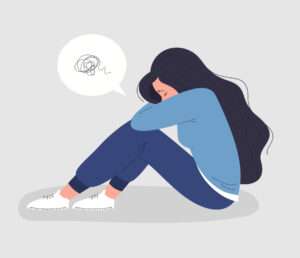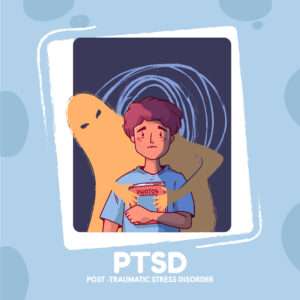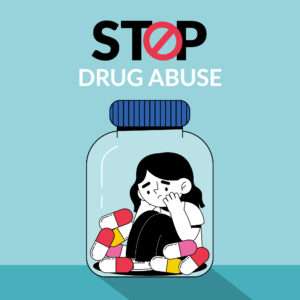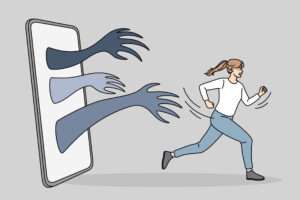In our society, domestic abuse is often associated solely with physical violence. However, it’s crucial to recognize that abuse can take various forms, many of which are not immediately visible.
In this blog post, we will shed light on some of the different forms of domestic abuse, their impact on mental health, and the importance of raising awareness; aiming to empower and educate readers on this important topic.
Domestic abuse involves a range of harmful behaviors which includes control, manipulation, threats, or intimidation within an intimate relationship. While physical violence is one aspect, it is essential to acknowledge the other forms that can be equally damaging:
1. Emotional and Psychological Abuse
This form of abuse involves constant criticism, humiliation, manipulation, and gaslighting -making you feel as though you are losing your mind. They do this by denying an event occurred, describing an event completely different from what really happened, twisting your words, or just deliberately calling you crazy. It weakens the victim’s self-esteem, causing long-lasting emotional scars.
Here are some indicators that a woman may be experiencing emotional abuse and some emotional scars that may result from the abuse:
1.1 Constant Criticism: If a partner consistently belittles, humiliates, or insults you, it may be a sign of emotional abuse. This behavior is intended to undermine your self-esteem and make you doubt your worth.
1.2 Manipulation and Control: Emotional abusers often use manipulation tactics to control their partners. They may use guilt-tripping, gaslighting, indifference, or withholding affection as a means of exerting power and control over you.

1.3 Isolation: If your partner isolates you from friends, family, or support networks, it can be a form of emotional abuse. This tactic is designed to make you dependent on them and limit your access to outside perspectives.

1.4 Blaming and Shaming: Emotional abusers frequently shift blame onto their partners, making them feel responsible for the abuser’s actions or emotions. They may say something like, “If you didn’t make me so angry, I wouldn’t have to yell at you. It’s your fault for pushing my buttons.” By suggesting that the partner’s actions or words provoked their anger, they are deflecting responsibility and making the partner feel accountable for the abuser’s abusive actions. They may also shame you for your thoughts, feelings, or choices, undermining your sense of self-worth. An example of this may look like, “You’re always making the wrong decisions. You can’t do anything right. I don’t know why I bother with you.” The victim may then internalize the shame and believe the abuser’s words. She may start to believe that she is indeed weak, unworthy, or incapable of making good decisions.
1.5 Threats and Intimidation: Emotional abuse can involve threats of harm, either to you or to themselves. This creates a climate of fear and control, leaving you feeling trapped and powerless. Please be mindful that threats and intimidation can be both covert and overt.

In the context of abuse, overt and covert refer to different ways in which abusive behaviors are expressed:
Covert abuse is behaviors that are more subtle, hidden, or disguised. These actions are often less apparent to outsiders and may be harder for the victim to recognize as abusive. Covert abusers often use tactics that are designed to confuse, control, and undermine the victim’s sense of self. They may use psychological manipulation, indifference, emotional coercion, or minuscule threats to maintain power and control over the victim. One example of a covert threat is, “If you ever leave me, I’ll make sure you never see your children again. I have connections and the power to ruin your life.”
In this example, the abuser uses a covert threat by manipulating the victim’s fear of losing their children. By suggesting that they have the means to take away the victim’s parental rights or create obstacles in their relationship with their children, the abuser instills fear and control.
Overt abuse involves behaviors that are openly displayed and easily observable. These actions are more visible and explicit in their intent to harm or control the victim. Examples of overt abuse include physical violence, verbal threats, yelling, hitting, or any form of direct aggression that is readily noticeable to others. Physically blocking the victim’s exit during an argument, raising a fist, or breaking objects in a fit of rage.
In this example, the abuser employs obvious intimidation tactics to instill fear and assert dominance. By physically blocking the victim’s exit or displaying aggressive behavior, such as raising a fist or breaking objects, the abuser creates an atmosphere of fear and control, making the victim feel trapped and powerless.
Domestic abuse, regardless of its form, can have a profound impact on the victim’s mental health. The constant fear, stress, and trauma can lead to a plethora of mental health issues; even suicidal thoughts. Emotional and psychological abuse can leave the victim emotionally scarred and can have a large effect on her mental health. This type of scarring varies from person to person, however, some common impact may include:
Low self-esteem and self-worth: Constant criticism, belittling, and demeaning behavior can weaken a person’s confidence and sense of self-worth.

Anxiety and fear: Living in a constant state of fear, anticipating the next outburst or attack, can lead to heightened anxiety and a sense of hypervigilance.

Depression and feelings of hopelessness: Emotional abuse can wear down a person’s mental and emotional well-being, leading to feelings of sadness, despair, and a loss of hope for the future.

Trust and Relationship Issues: Survivors of domestic abuse may struggle with trust and forming healthy relationships. The betrayal and manipulation experienced in an abusive relationship can make it challenging to trust others and establish secure connections.
Emotional detachment or numbness: To protect themselves from further emotional pain, some individuals may develop a coping mechanism of emotional detachment or numbing their feelings.
Guilt and self-blame: Abusers often manipulate their victims into believing that the abuse is their fault, leading to feelings of guilt, self-blame, and a distorted sense of responsibility.

Post-Traumatic Stress Disorder (PTSD): Survivors of domestic emotional abuse may experience symptoms of PTSD, such as flashbacks, nightmares, and intrusive thoughts, as a result of the traumatic experiences they endured.

Social Isolation: Abusers often isolate their victims from friends, family, and support networks. This isolation can contribute to feelings of loneliness, further impacting mental health and well-being.
Substance Abuse and Self-Destructive Behaviors: Some survivors may turn to substance abuse or engage in self-destructive behaviors as a coping mechanism to numb emotional pain or regain a sense of control.

2. Financial Abuse
Financial abuse occurs when one partner controls the finances, restricts access to money, or sabotages the victim’s financial independence. Withholding monies from a partner that causes them to experience financial hardship is a form of financial abuse. For example, if a wife is struggling to pay her bills, buy food, and clothing, or meet basic needs and her husband refuses to help even though he has the financial means, he’s being financially abusive. This form of abuse can leave the victim feeling trapped and hopeless.

3. Sexual Abuse
Sexual abuse involves any non-consensual sexual activity or coercion within an intimate relationship. It violates personal boundaries and can have severe psychological consequences.
4. Digital Abuse
With the rise of technology, digital abuse has become increasingly prevalent. It includes monitoring, controlling, or harassing a partner through social media, text messages, or other digital platforms.

According to the Domestic Violence Center of Chester County, PA:
Nearly half of all women (48.4%) in the United States experience psychological aggression by an intimate partner in their lifetime.
95% of perpetrators who physically abuse their intimate partners also psychologically abuse them.
Psychological abuse is a stronger predictor of PTSD in women than even physical abuse – 7 out of 10 women who are psychologically abused will display PTSD symptoms
In the past decade, over 1,600 lives were lost to domestic violence-related incidents in Pennsylvania.
1 in 3 female victims of homicide are killed by intimate partners.
72% of all murder-suicides involve an intimate partner.
A Call to Action
To create a society free from domestic abuse, we must take collective action as a society. Here are a few steps we can all take:
1. Educate Yourself and Others
Learn about the different forms of abuse, their signs, and the resources available for support. Share this knowledge with friends, family, and your community.

2. Support Survivors
Listen without judgment, offer empathy, and encourage survivors to seek professional help. Let them know they are not alone and that support is available.
3. Advocate for Change
Support organizations working to prevent domestic abuse and promote healthy relationships. Raise awareness through social media, community events, or by volunteering your time.

In conclusion, domestic abuse extends far beyond physical violence, encompassing emotional, financial, sexual, and digital abuse. Recognizing the signs and understanding the impact on mental health is crucial for supporting survivors and breaking the cycle. By promoting awareness, education, and empathy, we can create a world where everyone feels safe, respected, and valued within their relationships. Finally, let us think of the bible passage taken from Romans 12:17-21 “Repay no one evil for evil, but give thought to do what is honorable in the sight of all. If possible, so far as it depends on you, live peaceably with all. Beloved, never avenge yourselves, but leave it to the wrath of God, for it is written, “Vengeance is mine, I will repay, says the Lord.”
On the contrary, “If your enemy is hungry, feed him; if he is thirsty, give him something to drink; for by so doing you will heap burning coals on his head.” Do not be overcome by evil, but overcome evil with good.” This text offers valuable lessons for both the abuser and the victim in the context of domestic abuse. For the abuser, it calls for a transformation of mindset and behavior, emphasizing the importance of treating others with respect, seeking peace, and refraining from seeking revenge. By embracing these principles, the abuser can embark on a journey of personal growth and healing.
For the victim, the scripture teaches the power of resilience in the face of adversity. It encourages the victim to resist the urge for revenge and instead respond to the abuser’s actions with acts of kindness and compassion. By doing so, the victim can maintain their integrity, protect their mental well-being, and promote a sense of empowerment.
With some intentionality, the victim can learn a lesson on resilience by recognizing her inner strength, seeking support, prioritizing self-care, and embracing growth and learning. By drawing upon her resilience, the victim can navigate the challenges of domestic abuse, heal from the trauma, and rebuild her life with a renewed sense of hope and possibility.
This scripture serves as a transformative guide, challenging both the abuser and the victim to change their mindset and approach to domestic abuse. It encourages them to break free from the cycle of harm, embrace empathy, and foster a future built on respect, kindness, and resilience. May these lessons inspire a profound “aha” moment, leading to a transformative shift in how domestic abuse is viewed and addressed moving forward in converting pain to purpose.
If you have questions or would like some mental health coaching. Whether you are a victim or an abuser who wants to change; please reach out to us at natalie@hervirtuouspurpose.com and we’ll be happy to schedule a FREE consultation call.
Resources
https://dvcccpa.org
https://www.biblegateway.com/passage/?search=Romans+12%3A17-21&version=ESV

